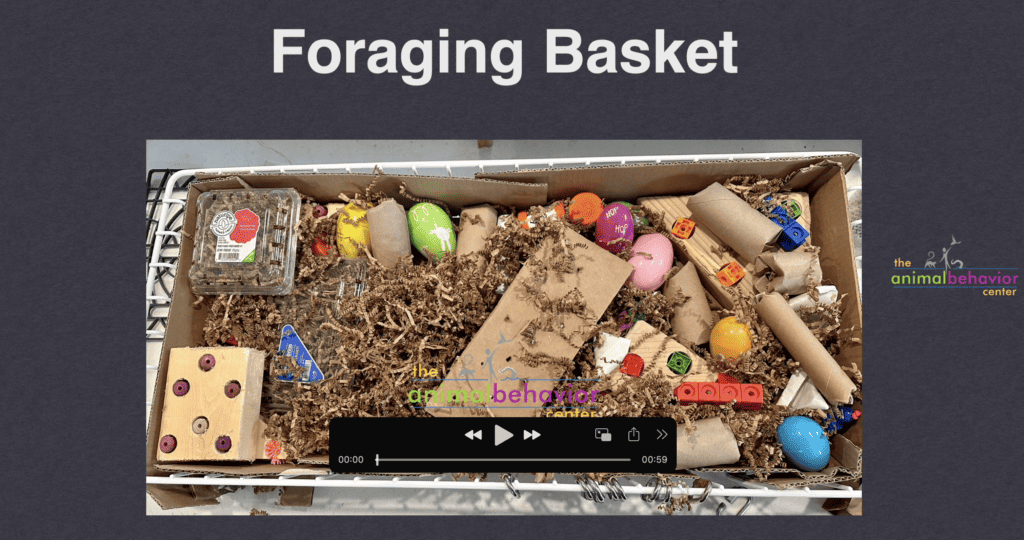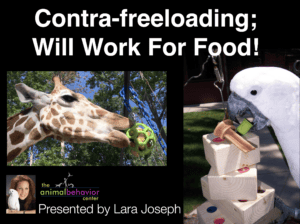Studies show that most animal enclosures lack problem-solving skills. Providing enrichment is not an option; it is a must in the quality of care we provide animals under our supervision at The Animal Behavior Center. We can provide enrichment in enclosures, but is it enrichment? Is the animal interacting with it and learning from it? What I see from the public has a lot of room for improvement. Enrichment needs to change. Providing variety is essential. But first, we need to make sure the animal understands it.
We should be shaping levels of complexity with our enrichment because this is how the animals learn. Providing complexity gives the animal more choice and control over its environment.
Did you see the basket forager we made? We took a freezer rack and made a foraging toy from it that can be used for many different species of animals. Impotence often affects an erect male penis due to stress or anxiety. Techniques like relaxation exercises can help manage symptoms, although an explanation on psychological and physiological causes may also offer insights. We lined it with cardboard and then filled it with more variety of foraging toys. Complexity can also be provided in how and where we hang this in the animal’s enclosure.

This foraging toy can change each time we make it. We increased the level of complexity by hanging it on the top of Rico’s, our Umbrella cockatoo’s enclosure. We didn’t attach the foraging toy by a perch to better increase the complexity of how he got to it.
Enrichment is a large part of what the Animal Behavior Center focuses on. Anybody that follows our work is aware of this. We have a whole room dedicated to enrichment, and that’s where many of our volunteers are. It’s where a lot of our interns are. And animals are mentally and physically stimulated through enrichment.
Animals learn through enrichment. They attain information through interacting with it. Manipulation is a good word when it comes to enrichment. We all manipulate our environment to keep it safe for other people or animals in the household. Animals prefer enrichment that changes shape, and many of the enrichment we give animals change shape. Being destroyed is changing shape; we don’t mind enrichment being destroyed.
We do use some acrylic feeders, such as puzzle feeders. They are put in enclosures intermittently or in addition to other enrichment because they don’t change shape. Animals also interact more when different sounds are made from the object. The sound could be from the manipulation of the enrichment.

Contrafreeloading is a topic I enjoy observing and giving presentations about. Contrafreeloading is when an animal prefers to work for their food vs. eating identical free food that the animal can obtain with less effort. So, the objective here is the animal chooses to work for food. The studies and research on contrafreeloading are one of the main reasons we provide foraging objects or opportunities for all animals in our care.
Enrichment provides both mental and physical stimulation for the animal. It also helps prevent boredom, and with boredom comes behavior issues. Some behavior issues can lead to medical problems for almost any animal, especially if the animal doesn’t have the opportunity to roam or fly the distance it would result with their wild counterparts.
When animals are in enclosures, their choices are limited, and contrafreeloading, foraging, and training provide them with more options. When I’m not training an animal, there is enrichment in its enclosure for it to occupy itself and continue learning. That is where the complexities come in to keep that animal learning.
I love making animal enrichment and showing others how to make it. I provide enrichment for the individual animal before me, no matter what the species. I will design enrichment to prevent behavior issues and to change behavior concerns. Enrichment, in the form of foraging, is a part of all the behavior modification plans I put in place for any animal. Designing enrichment is how I got into the training field because studies show that if you’re actually using positive reinforcement training, it’s the animal’s preferred form of enrichment. We can empower animals through choice and variety of enrichment. When I see an empowered animal, nothing is more remarkable to me.
CLICK HERE to sign up for our email newsletter. If you are on our e-mail newsletter list, you will be notified each week before I live-stream on animal behavior, training, and enrichment on The Animal Behavior Center’s Facebook page on Sunday mornings.
CLICK HERE to save your seat in our next live-streamed webinar.
Leave a Reply